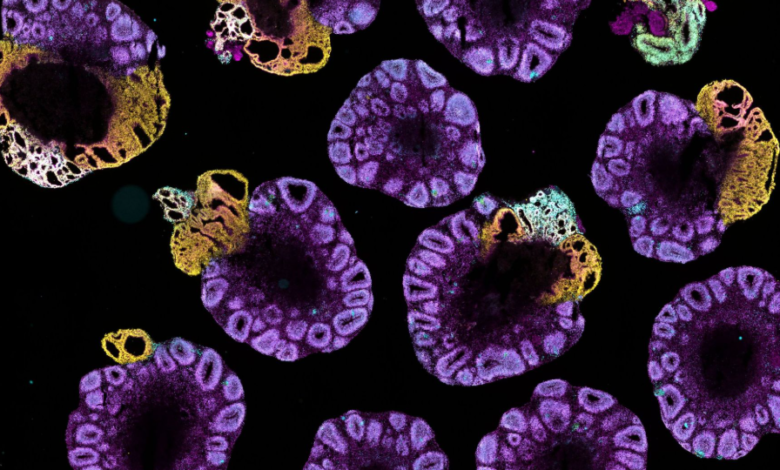How Tissue-Derived Cell Lines Enhance Disease Modeling

Imagine a world where understanding and treating complex diseases like cancer isn’t a shot in the dark, but a precisely targeted intervention. This isn’t science fiction; it’s the ongoing reality being shaped by advancements in biomedical research, particularly through the sophisticated use of tissue-derived cell lines. These cellular models offer an invaluable window into disease mechanisms, drug responses, and therapeutic development, dramatically accelerating our progress toward better health outcomes.
The journey from a patient’s biopsy to a functional disease model in a laboratory dish is a testament to scientific ingenuity. These cell lines, originating directly from human tissues, retain many of the characteristics of the original disease, making them exceptionally powerful tools for research. By providing a reproducible and accessible platform, they allow scientists to dissect the intricate pathways of disease in a controlled environment, paving the way for groundbreaking discoveries and innovative treatments.
The Foundation of Advanced Disease Modeling
Tissue-derived cell lines are the bedrock of modern disease modeling. Unlike genetically engineered cell lines which might feature specific alterations, these lines are often established directly from diseased tissues, such as tumors. This direct lineage ensures that the cellular models intrinsically carry the genetic and epigenetic signatures of the original disease, making them highly representative.
For instance, in oncology research, establishing cell lines from various tumor types allows for a comprehensive study of cancer heterogeneity. Researchers can investigate how different cancers respond to therapies, identify biomarkers for early detection, and even predict patient outcomes. This capability is paramount in an era where personalized medicine is becoming increasingly vital.
Bridging the Gap Between In Vitro and In Vivo
One of the significant advantages of tissue-derived cell lines is their ability to bridge the gap between in vitro (laboratory dish) and in vivo (living organism) studies. While animal models offer a complex physiological environment, they can be costly, time-consuming, and sometimes fail to accurately mimic human disease due to species-specific differences. Tissue-derived cell lines, on the other hand, provide a human-specific context, allowing for more relevant insights into disease progression and drug efficacy.
Furthermore, these cell lines can be grown in 2D monolayers or more complex 3D spheroid and organoid cultures, which better recapitulate the cellular architecture and microenvironment of native tissues. This advanced culturing technique provides a more physiologically relevant model, enhancing the predictability of preclinical drug testing and reducing the need for extensive animal experimentation.
Case Study: The Power of Ovarian Cancer Cell Lines
Ovarian cancer remains one of the most challenging cancers to treat, often diagnosed at advanced stages with high recurrence rates. Research into new therapeutic strategies is critical, and here, tissue-derived cell lines play an indispensable role. Consider the A2780 cell line, a well-established human ovarian carcinoma cell line. Derived from an untreated patient, A2780 has become a cornerstone for studying ovarian cancer biology and drug resistance.
Researchers frequently use the A2780 cell line to screen novel chemotherapy agents and investigate mechanisms of drug resistance to platinum-based drugs, which are standard treatments for ovarian cancer. By exposing these cells to various compounds and observing their response, scientists can identify promising drug candidates that might be effective in patients. Furthermore, drug-resistant sublines derived from A2780 allow for focused studies on how cancer cells develop resistance, leading to the discovery of new targets for overcoming treatment failure. This direct application of a specific cell line highlights the profound impact these models have on advancing cancer research and ultimately, patient care.
Actionable Insights for Researchers and Clinicians
For researchers, the meticulous characterization and validation of tissue-derived cell lines are paramount. Ensure that your chosen cell line accurately reflects the disease you intend to study, considering its genetic profile, passage number, and growth characteristics. Regular authentication through techniques like STR profiling is crucial to prevent cross-contamination and ensure the integrity of your research.
For clinicians, understanding the power of these models can inform the interpretation of preclinical data and guide the selection of promising therapies for clinical trials. The insights gained from studies using cell lines like A2780 directly contribute to the development of personalized treatment strategies, moving us closer to therapies tailored to individual patient needs.
See also: Tri Cities Peace and Healing: Comprehensive Mental Health Services
The Future of Disease Modeling
The field of tissue-derived cell line research is continuously evolving. Advances in CRISPR-Cas9 gene editing, single-cell sequencing, and organ-on-a-chip technologies are further enhancing the utility and sophistication of these models. These innovations allow for the creation of more precise disease models with specific genetic modifications, enabling a deeper understanding of gene function and disease pathogenesis.
The integration of artificial intelligence and machine learning with data generated from cell line experiments promises to accelerate drug discovery and biomarker identification. By analyzing vast datasets, these technologies can predict drug efficacy and identify novel therapeutic targets with unprecedented speed and accuracy.
In conclusion, tissue-derived cell lines are not merely laboratory tools; they are essential engines driving the engine of biomedical discovery. From unraveling the complexities of cancer to testing innovative therapies, their role is indispensable. As science progresses, these cellular models will continue to be at the forefront of our fight against disease, bringing us closer to a future where effective treatments are not just a hope, but a reality for all.







